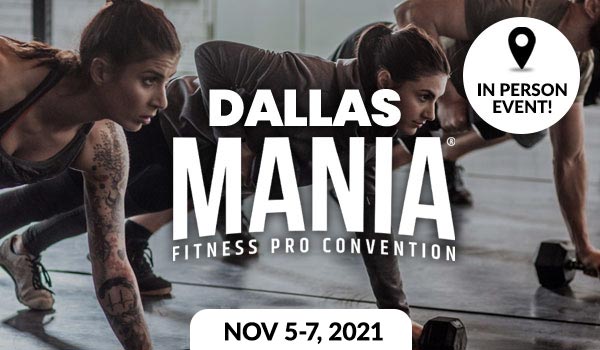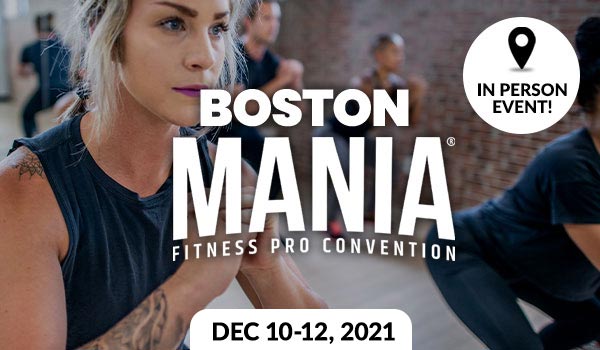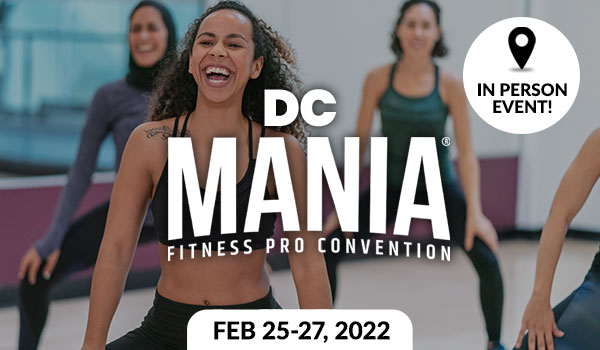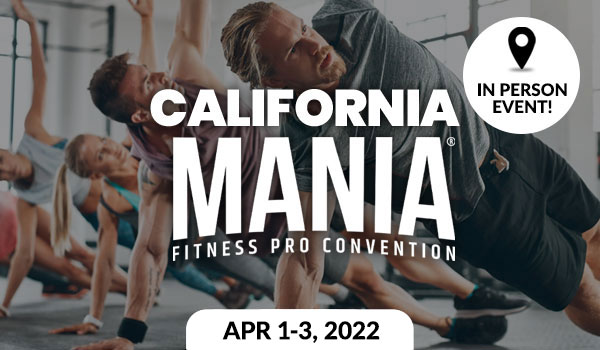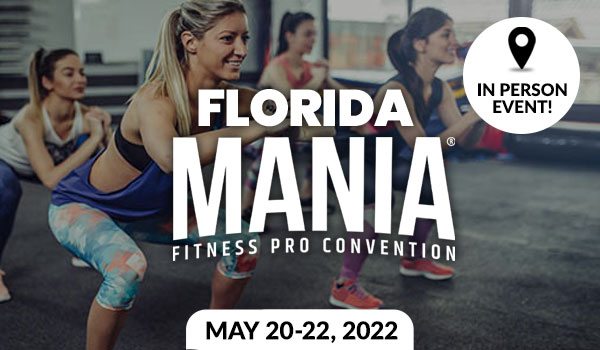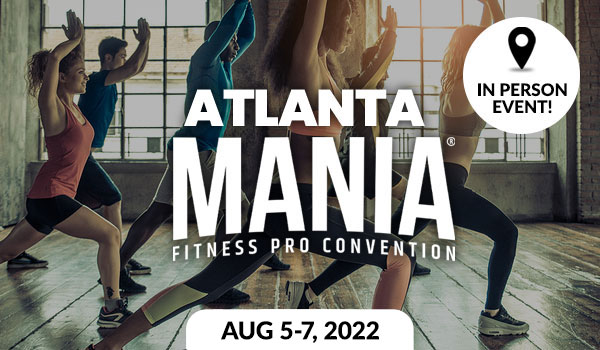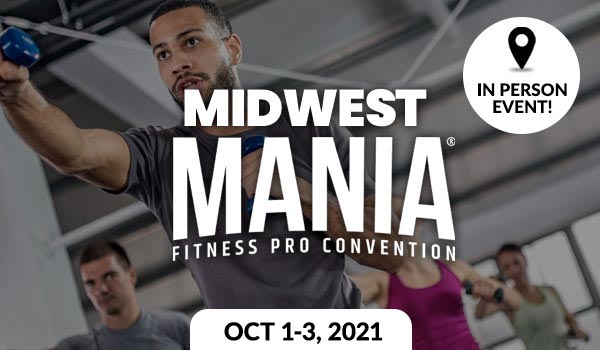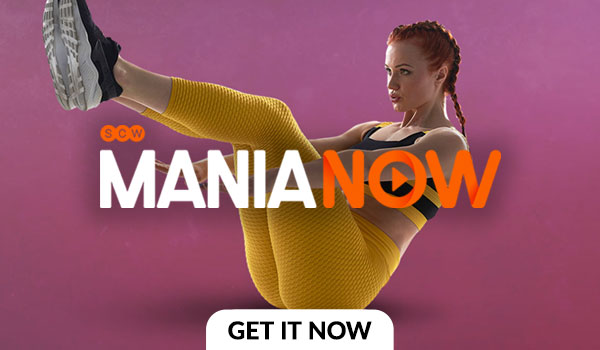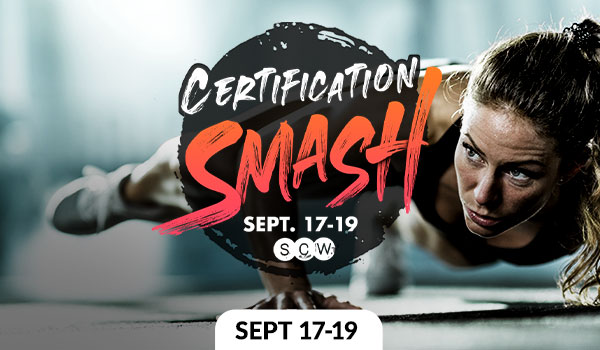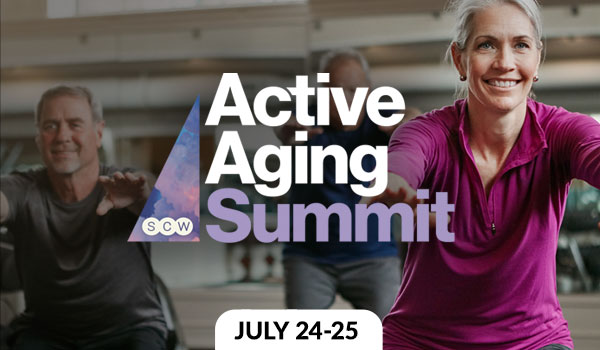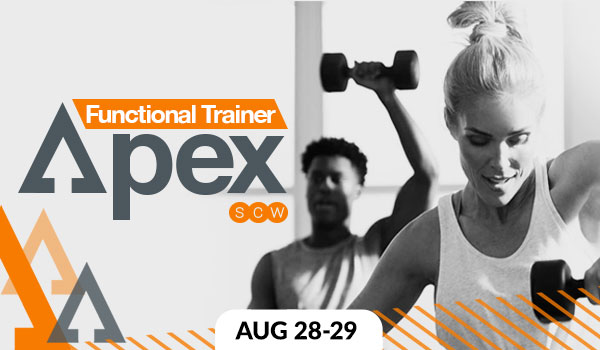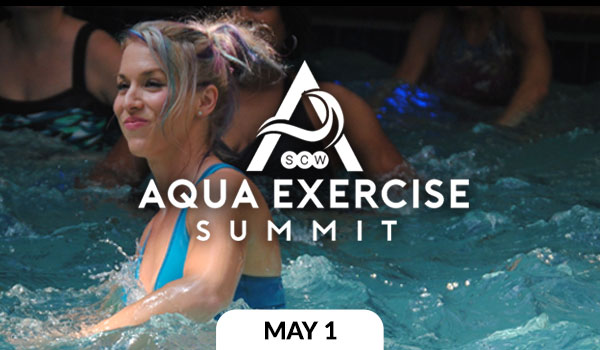
SCW Spotlite: Issue 38

FREE MANIA®: The Scudder Legacy
by Robin Taylor
“Michael’s unexpected death created the birth of many,” reflects Sara Kooperman, CEO of SCW Fitness. “His legacy carries on in each Scudder Scholarship awarded and we will always remember the contributions he made to the Fitness Industry and his amazing ability to look beyond to empower the future.”
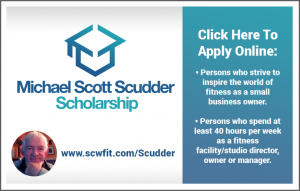 Just over four years ago, the fitness industry lost a true legend and icon. Michael Scott Scudder may be gone, but everything he stands for continues to thrive. Anyone who knew him saw him as a soothsayer. His insights into the future were based on personal experience and professional evaluations. Michael was well trusted, and he trusted everyone. His four decades in the fitness and wellness industries, including CEO of MSS Network, helped him reach out to thousands of individuals. Michael was always there to listen, think, evaluate, provide his opinion, predict, and respond to anyone and everyone who went to him for help and advice.
Just over four years ago, the fitness industry lost a true legend and icon. Michael Scott Scudder may be gone, but everything he stands for continues to thrive. Anyone who knew him saw him as a soothsayer. His insights into the future were based on personal experience and professional evaluations. Michael was well trusted, and he trusted everyone. His four decades in the fitness and wellness industries, including CEO of MSS Network, helped him reach out to thousands of individuals. Michael was always there to listen, think, evaluate, provide his opinion, predict, and respond to anyone and everyone who went to him for help and advice.
For many years, Michael presented at MANIA® Conferences held throughout the country. His wisdom, knowledge, wit, and passion created lasting impressions on faculty and attendees. He was truly one-of-a-kind. To honor his life and professional career, a scholarship was set up to aid a worthy budding instructor or trainer, club owner, manager or director looking for business advice and industry education.
SCW Fitness Education offers free attendance to a MANIA® Convention of their choice for those who apply and are awarded the Michael Scott Scudder Scholarship. “He was our friend, our mentor, our mirror into our businesses and ourselves,” recalls Kooperman. This gift shares his mission in reshaping the fitness world of today and those who join in the future.
Michael shared of himself with everyone he met and especially loved to experience MANIA® with his wife, Phyliss. He was able to balance his professional life and personal commitments with ease and grace. The scholarship is open to those who reflect the passion, high-standards, and desire to succeed set forth by him. They must have a strong commitment to continuing education in the fitness/wellness market. The person strives to inspire others and can express their reasons for needing the award.
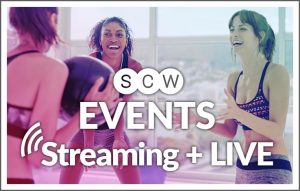 Since 2017, SCW Fitness Education has handed out well over 100 awards. We are excited to announce the most recent recipient of the Michael Scott Scudder Scholarship, Heather Moseley. She has been involved in the fitness industry since college, took a break, and picked it back up in her “middle-ages.” She teaches everything from WATERinMOTION® and Silver Sneakers to HIIT and strength training classes. Heather has owned her non-fitness business for eight years, but the pandemic caused a hardship for her professionally and personally. There is a silver lining, it created the opportunity for her to become a Certified Personal Trainer out of her love for fitness and helping others. Heather feels by attending a MANIA® Pro Fitness Convention, her drive to grow as a business owner, instructor and trainer will advance her career in fitness and the education will bring on more clients and class participants. She knows the experience will forever lead her to be the best trainer and person possible as well as make a difference for those around her.
Since 2017, SCW Fitness Education has handed out well over 100 awards. We are excited to announce the most recent recipient of the Michael Scott Scudder Scholarship, Heather Moseley. She has been involved in the fitness industry since college, took a break, and picked it back up in her “middle-ages.” She teaches everything from WATERinMOTION® and Silver Sneakers to HIIT and strength training classes. Heather has owned her non-fitness business for eight years, but the pandemic caused a hardship for her professionally and personally. There is a silver lining, it created the opportunity for her to become a Certified Personal Trainer out of her love for fitness and helping others. Heather feels by attending a MANIA® Pro Fitness Convention, her drive to grow as a business owner, instructor and trainer will advance her career in fitness and the education will bring on more clients and class participants. She knows the experience will forever lead her to be the best trainer and person possible as well as make a difference for those around her.
Let’s congratulate Heather and all the other winners of the Michael Scott Scudder Scholarship. To apply, please visit: www.scwfit.com/scudder. Make sure you fill out all the appropriate areas in the application. SCW wishes you the best of luck and we look forward to seeing you participate at an upcoming SCW MANIA®.
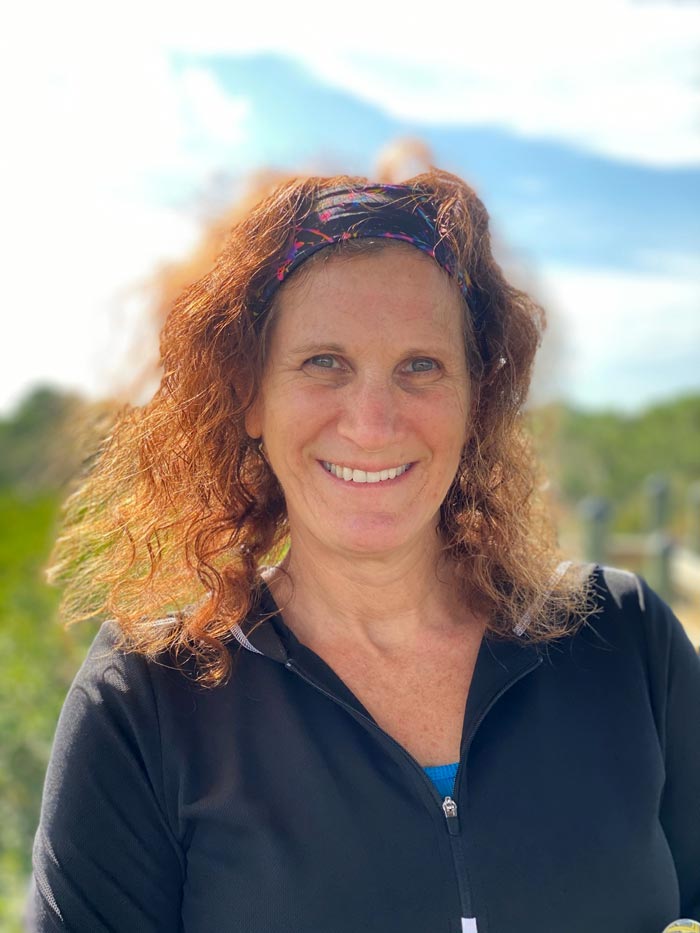 About the Author, Robin Taylor
About the Author, Robin Taylor
Robin is the SCW Editor for Spotlite, Tidal Waves and Weekly Work-UP, as well as Assistant Product Manager for MANIA® Fitness Conventions and Team Manager for WATERinMOTION®. Having taught Aquatic Fitness for over 15 years, Robin is AEA and AFAA certified and a WATERinMOTION® Champion. She has participated in several WIM educational videos, as both a pool participant and on-deck presenter. Robin has been an employee of SCW for almost five years. She is married and has two adult daughters and has a bachelor’s degree in journalism from the University of Florida.

Fitness is the Most Popular Physical Activity Globally
by HCM Magazine
Fitness is the world’s most popular physical activity and more than 50 percent of people would like to spend more time exercising.
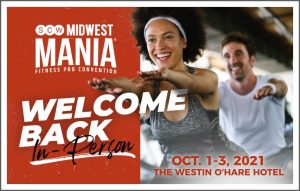 The figures come from the new Global Views on Exercise and Team Sports study by Ipsos – conducted with the World Economic Forum – which explores attitudes to physical activity and sport in 29 nations.
The figures come from the new Global Views on Exercise and Team Sports study by Ipsos – conducted with the World Economic Forum – which explores attitudes to physical activity and sport in 29 nations.
Among the report’s findings were that the five most frequently practiced team sports and activities in a normal week are fitness (20 per cent of those questioned), running (19 per cent), cycling (13 per cent), Football/soccer (10 per cent) and swimming (9 per cent).
It also showed that almost six in ten citizens across the 29 markets say they would like to do more exercise (58 per cent), with the biggest obstacle being lack of time (37 per cent).
The study also throws up interesting geographical and cultural differences when it comes to barriers to physical activity.
People in Turkey and Argentina cited a lack of money (33 per cent and 30 per cent respectively) as the main barrier to taking part, while citizens of Saudi Arabia and South Africa were most likely (38 per cent) to say the weather was too hot. Meanwhile, 40 per cent of the Japanese say there are no barriers and that they simply do not want to exercise.
People from the Netherlands are the most physically active of the 29 nations studied, spending 12.8 hours a week – almost two hours per day – doing physical exercise or team sports.
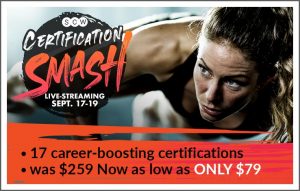 The figure is nearly double the average of 6.1 hours per week recorded in the study globally.
The figure is nearly double the average of 6.1 hours per week recorded in the study globally.
Perhaps surprisingly, Brazilians are the least physically active, spending just three hours per week doing physical exercise (26 minutes per day).
When it comes to differences between genders across the 29 countries, men spend, on average, 6.9 hours per week doing physical activity – almost an hour a day. Women spend 5.4 hours per week doing exercise – 1.5 hours less than men.
Ipsos said: “These are the results of a 29-country survey conducted using the Ipsos Global Advisor online platform. “We interviewed a total of 21,503 adults across the markets between 25 June and 9 July 2021. “When it came to barriers to exercise globally, we found that a lack of time was the biggest hindrance – followed by a lack of money (cited by 18 per cent) and the weather being too hot or too cold (17 per cent). “Just over one in five (22 per cent) say there are no barriers to their participation in exercise.”
Written by Tom Walker and Republished from Health Club Management- HCM weekly ezine – Read the full article here

The Ecosystem of Technology
by Bill McBride & Sara Kooperman, JD
Technology is critical and ever-present. Before the shutdown, technology was a part of facility owners’ strategy and gym users’ tracking, but COVID pushed us to use technology in more ways than ever before. As we reset and get ready to thrive in 2022, now provides a good opportunity to review your tech stack. What do you have, what do you need, what do you want, and what is the return on investment?
 A strong outlook for health clubs is a “high tech and high touch” model. Our members come to us sometimes two to five times per week, if not every day. Some for personal facility use, others for individual training and group exercise classes. Often we, as owners, trainers and instructors, resist new technology adoption because we are not just changing a system or process for ourselves or internal staff, but also for the multitude of individuals that interface with our brand regularly. This is the one of the few industries, other than coffee shops and maybe neighborhood taverns, that patrons frequent daily or several times a week.
A strong outlook for health clubs is a “high tech and high touch” model. Our members come to us sometimes two to five times per week, if not every day. Some for personal facility use, others for individual training and group exercise classes. Often we, as owners, trainers and instructors, resist new technology adoption because we are not just changing a system or process for ourselves or internal staff, but also for the multitude of individuals that interface with our brand regularly. This is the one of the few industries, other than coffee shops and maybe neighborhood taverns, that patrons frequent daily or several times a week.
We are not in a transactional business arena but a service-based relationship arena. Even the coffee shop example is transactional – get your coffee and off you go. Neighborhood bars may be the exception for those that go multiple times a week and create connections there. However, consumers still don’t go to the same hotel, restaurant, movie theatre, cruise, or airline two to five times a week. It simply doesn’t happen.
This leads to an important aspect of data management and quality control that is unique to our industry. Seeing that we are a destination that members interact with more frequently than most other businesses, it introduces an opportunity for more breakdowns in the member/client journey. Ensuring data is consistent across all systems is one way to help mitigate errors and enhance the participant experience.
Like most decisions and processes implemented, start with evaluating where the member journey begins. In 2021, the member begins online. If your website, social media pages, and review sites (Google, Yelp, etc.) are where they begin their journey, then it only makes sense to have a tech stack that’s conducive to those platforms.
Questions that you should be asking yourself are:
- What does your member/client journey look like from finding your business online to purchasing a membership, class package or training sessions?
- Can the consumer purchase online?
- Can the consumer enroll in a trial membership, free class or session online?
- What other barriers exist between your prospective member or client and them joining the facility or buying training packages and how can you eliminate them?
 A common barrier from clubs is having several systems that fail to “talk” to each other. For instance, if your website doesn’t speak to your Customer Relationship Management (CRM) system, and your CRM doesn’t speak to your Club Management System (CMS) then you are inadvertently creating 3 data silos that you must either sync via API or update manually. As a personal trainer or group ex instructor, having the client or participant find you or your class is key. Maintaining a website, or more importantly, social media pages (Instagram, Facebook, LinkedIn, etc.) is extremely important when it comes to communication and feedback.
A common barrier from clubs is having several systems that fail to “talk” to each other. For instance, if your website doesn’t speak to your Customer Relationship Management (CRM) system, and your CRM doesn’t speak to your Club Management System (CMS) then you are inadvertently creating 3 data silos that you must either sync via API or update manually. As a personal trainer or group ex instructor, having the client or participant find you or your class is key. Maintaining a website, or more importantly, social media pages (Instagram, Facebook, LinkedIn, etc.) is extremely important when it comes to communication and feedback.
Ideally, once a member joins online, the data they provided is entered into your database or CMS real-time. This ensures a seamless journey from the moment they sign up. Demographic and personal information is entered into a “welcome” cadence in the CRM system to provide complimentary workouts to get them started on their new fitness experience. This is just one example enabled by having the right combination of technology for your member “ecosystem”.
When it comes to your return on investment, consider lowering the total cost of ownership. This can be achieved by consolidating technology vendors and choosing one that works best for your facility or business. Communication is key to achieve a proficient experience.
Customer Relationship Management – Member/Client Management (Billing & Collections) – Participant Experience – Fitness Engagement – Organizational Data/Dashboard – All are critical to successful operations.
Companies like Talent Hack and ABC Fitness Solutions are excellent resources to handle these critical areas for success.
 About the Author, Bill McBride
About the Author, Bill McBride
Bill is a health club industry veteran with over 25 years of experience managing all aspects of commercial, medical, residential and corporate fitness centers. He is the co-founder of Active Wellness, LLC and the owner of BMC3, a health club consultancy. Bill has served in advisory positions for prominent industry associations, including IHRSA, and was recently named one of the top 25 Consumer HealthTech Executives of 2020. He is actively engaged as an industry education author and speaker.
 About the Author, Sara Kooperman, JD
About the Author, Sara Kooperman, JD
Sara, CEO of SCW Fitness Education and WATERinMOTION®, is a visionary leader that has transformed the fitness education community. A successful business owner and advisor, she is a keynote speaker, published author, podcast presenter and sought-after industry trail-blazer. Sara has a unique ability to share her passion and devotion towards fitness education through her humor, enthusiasm and her effervescent no-nonsense personality. She serves on the Gold’s Gym Think Tank, was on the Women in Fitness Association Board of Directors and is a proud inductee into the National Fitness Hall of Fame. Sara currently serves on IHRSA’s Headlight Committees for Facility Standards and has left an indelible mark on the fitness industry as a whole.

Barre Boom-ers
by Abbie Appel
Barre workouts and Active Agers are not the typical combination, but it’s actually the perfect form of exercise for the 65 and older population. The term barre is a French term used in ballet for a handrail placed hip height and used by dancers to maintain balance during practice. One of the main goals of this demographic is to improve balance and agility, and since Barre class focuses on the lower body and core, flexibility and strength develop from the ankles to the abdominals. It also stresses proper form and alignment to help develop the back and improve posture.
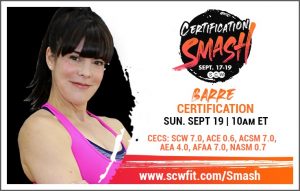 Abbie Appel, an award-winning fitness educator, develops and delivers Barre programming and is the creator of SCW Barre and Pilates Certifications. Her latest development, Barre Boom, is a functional total body workout specifically designed for Active Agers. This 50-minute class focuses on developing muscular endurance, greater range of motion, joint mobility, and stability, as well as improve posture, balance, and function. The only equipment needed for this fun, yet challenging workout is a mat and 2-3lbs dumbbells. The music is upbeat and around 128 bpm, which is perfect for this age group. This program can vary in intensity levels. It can be taught bilateral versus unilateral, short lever versus long lever with a high number of repetitions, multiple sets, and a set duration. Movements can be progressed and modified starting off slow and gracefully increasing speed. Joint range of motion starts full and gets shorter, leading to a challenge zone of small ROM pulses and isometric contractions.
Abbie Appel, an award-winning fitness educator, develops and delivers Barre programming and is the creator of SCW Barre and Pilates Certifications. Her latest development, Barre Boom, is a functional total body workout specifically designed for Active Agers. This 50-minute class focuses on developing muscular endurance, greater range of motion, joint mobility, and stability, as well as improve posture, balance, and function. The only equipment needed for this fun, yet challenging workout is a mat and 2-3lbs dumbbells. The music is upbeat and around 128 bpm, which is perfect for this age group. This program can vary in intensity levels. It can be taught bilateral versus unilateral, short lever versus long lever with a high number of repetitions, multiple sets, and a set duration. Movements can be progressed and modified starting off slow and gracefully increasing speed. Joint range of motion starts full and gets shorter, leading to a challenge zone of small ROM pulses and isometric contractions.
Exercise goals for Active Agers include joint mobility and stability, balance, muscular strength and endurance, optimal alignment and posture, and fall prevention. Some tips to keep in mind when working with this population is to use less volume, build in stretches and active recovery, make sure to counterbalance muscles; using the opposing one, especially when fatigued. Be sure to encourage breaks and recovery when optimal posture is not being maintained.
A typical class format includes a 10–12-minute warm-up or activation period broken into two segments. Once the body is warm, the core is worked followed by a 30–35 minute workout. The workout is broken down into upper body floor, upper body standing, thigh work, seat work standing, seat work floor, and core strength. The class finishes with a 5-minute recovery stretching the muscles used.
Sample Barre Boom Class
Warm-Up/Activation (10 – 12 minutes)
Warm-Up
Segment 1
Breathing w/ hip hinge 2/2 timing
Turn out – arms open 2/2
Hip hinge/turn out combo 2/2, 1/1
Segment 2
Narrow plie – arms down 2/2
Leg Circle – arms open 2/2
Wide Plie – arms down 2/2
Wide Plie – lateral flexion 2/2
Repeat
Core
Quadruped shifting R/L 2/2
Mini Push-up 1/1
Bird Dog – Oppositional Arm/Leg 2/2
High Plank knee to chest 2/2, 1/1
Repeat other side
Workout (30 – 35 minutes)
Upper Body Floor
Push-up/knee taps – feet down 2/2, 1/1, half range, pulse
Counterbalance – prone spinal extension or wall slides
Chest Stretch
Upper Body Standing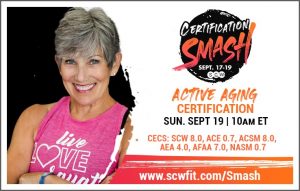 Biceps Curl w/dynamic parallel lunges 2/2, 1/1 half range, pulse
Biceps Curl w/dynamic parallel lunges 2/2, 1/1 half range, pulse
Shoulder Extension w/Triceps 2/2, 1/1, half range, pulse
Repeat Biceps Curls w/dynamic parallel lunges
Shoulder/Triceps Stretch
Thigh Work
Narrow Plie 2/2, 1/1, half range, pulse
Heel lift/Plie 1/1
Wide Plie to Passe 2/2, 1/1
Quadricep and hip flexor stretch
Seat Work Standing
Foldover
Full Hip Hinge
Hip Extension leg lift (top leg) in hip hinge 2/2, 1/1, half range, pulse
Seat Work Floor
Bridge 2/2, 1/1, half range, pulse
Single Leg Lift and Lower
Core Strength
V-sits w/rows
Scissors
Pulses
Recovery (5 minutes)
Supine hip extensor stretch
Figure 4 – hip rotator stretch
Side-lying quadruped/hip flexor stretch
Seated rear deltoid stretch
Seated chest/pectoralis stretch
We hope you enjoyed this sample workout. Join Abbie at SCW Fitness Midwest MANIA®, October 1-3. Her workshops are spread throughout the 3-day event. Choose from over 200 powerful sessions, 80 are hybrid and led by 70 expert presenters. Earn 20 CECs/CEUs from SCW, ACE, AEA, AFAA, and NASM. Registration starts at $99 and is 100% guaranteed. Attend with the confidence knowing SCW is following CDC guidelines to protect their participants and staff against COVID-19. To learn more about Midwest MANIA®, take a peek. We look forward to seeing you there.
 About the Author, Abbie Appel
About the Author, Abbie Appel
Abbie Appel is the owner and CEO of Abbiefit Consulting, Appel Programming Solutions and the Program Director at Fitspace Studios. As an award-winning fitness educator, Abbie develops and delivers programs for Power Systems, Schwinn Cycling, and many other organizations. She created the SCW Pilates and SCW Barre Certifications and received SCW’s “Best Presenter” award. Abbie has produced and starred in over 30 fitness videos and contributes to fitness publications such as Self, Shape, and Prevention.

7 Steps to Create Connection in a Crisis™
by Sgt. Ken®
Leadership expert John C. Maxwell says, “A crisis does not define us, it reveals us.”
 It was over a year ago when the COVID crisis pulled us into new standards of living. We donned medical masks and practiced social distancing at grocery stores and fuel stations, only to retreat home for multiple months of general or enhanced community quarantine.
It was over a year ago when the COVID crisis pulled us into new standards of living. We donned medical masks and practiced social distancing at grocery stores and fuel stations, only to retreat home for multiple months of general or enhanced community quarantine.
Continued confinement and isolation within congested spaces created a climate of chaos and calamity for some, while others thrived by cultivating connection and community through any means possible.
Dr. Dean Ornish, author of the UnDo It! How Simple Lifestyle Changes Can Reverse Most Chronic Diseases states that “the need for connection and community is primal, as fundamental as the need for air, water, and food.”
The Pandemic is not your opposition, however your opportunity to build strong bonds with your battle buddies, family, and friends, so that you will turn your adversities into advantages! It is when we look through the lenses of unwavering resilience and unyielding resolve together, we learn how to deal with dark days and bounce back better than before.
Use the following seven simple steps to create connection in any crisis:
- Embrace Empathy. Empathy is the ability to understand how someone is feeling through shared emotions, even if you think differently about their dilemma.
- Push for Perspective. Issues become problems when you fail to accept them, or when you refuse to believe that you are imperfect. Perspective requires that you:
A. Acknowledge. Acknowledge the problem for what it is.
B. Accept. Accept the problem as something you can repair or have resolve that it is beyond your control.
C. Address. Address the problem with action. - Cultivate Confidence. Proper posture will help your body to function better, allowing you to respond to situations with more strength and stamina. You will have an easier time connecting with other people by presenting yourself with powerful posture.
- Have Humility. Your family and friends will love your acts of transparency. It makes you approachable and profound.
- Master the Morning. Master the morning by exercising vigorously, meditating regularly, eating properly, to produce a pattern of progress for the entire day.
- Restore Resilience. Make a list of 20 books that you want to read, books that will impact and empower you. Start listening to podcasts by people that have positive messages. The more you have in you, is more you have to help others.
- Champion Change. Are you living by results or reasons why you won’t dive into your dreams? A crisis is not the time to bring back what we had, but to become something better. To be the champion of change requires that you:
A. Dream. It is a shame that it sometimes takes a crisis to remind us how to dream again.
B. Develop. This means that you will need to take some risks to grow, personally and professionally.
C. Deliver. This means that you will need to put action behind your aim and create new growth with what you have already.
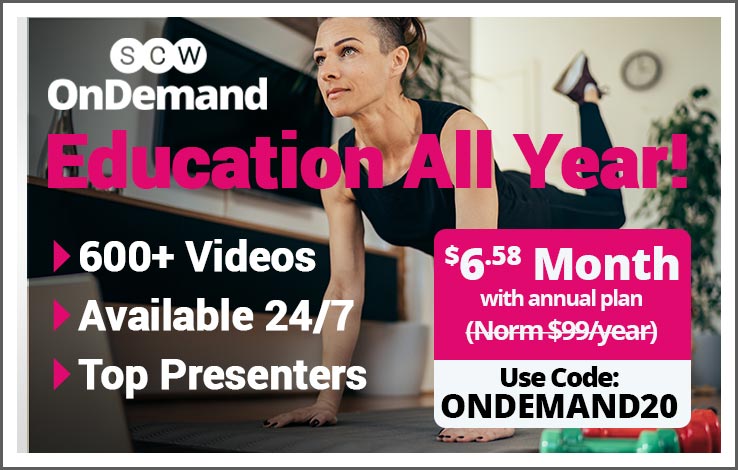 The bottom line: If you don’t pursue connections with people you are going to remain in captivity to your problems.
The bottom line: If you don’t pursue connections with people you are going to remain in captivity to your problems.
Call to Action: How will you use these steps to strengthen yourself and the people you serve today?
Special Remarks: We at WaterRower are committed to providing you fitness in multiple merits, targeting the body, mind, and spirit. We offer motivational coaching theory and positive psychology. We explain the essential elements of effective leadership and how to implement behavior change basics and exercise adherence. When you complete our WaterRower Virtual Crew Coach Course you will receive our new bonus program, the Virtual Presentation Playbook!
The Virtual Presentation Playbook™ features seven simple steps to connect to your community on camera. You’ll discover how to position your lighting and yourself in extremely effective angles, make the right technical choices for sound and visual, prepare your voice for powerful delivery, and master the art of pitch change and presentation timing. It’s time to captivate your distant audience and create an exceptional experience that will keep them coming back for more!
Join our Crew today: WaterRower Virtual Crew Coach Course™
 About the Author, Sgt. Ken®
About the Author, Sgt. Ken®
Ken Weichert (aka SGT Ken®) is an award-winning international speaker, six-time US Army Soldier of the Year, Master Fitness Trainer, Master Resilience Trainer, and decorated combat veteran. Ken serves as the Director of Programming for WaterRower®. Ken’s personal mission is to help people turn stress into strength and obstacles into opportunities through physical and emotional resiliency coaching and tactical leadership training. For more information, email sgtken@sgtken.com.

Why is the “Stripper Pole” is the Best Idea in Fitness
by Carla Gilfry, MA
A vertical pole, a.k.a. stripper pole, isn’t typically a piece of equipment used for fitness, but it’s time to rethink that. Recently, the use of this unique upright bar has increasingly grown in popularity in the wellness community, and there are several reasons why!
 If you look at people in the “entertainment” industry, they are quite strong and muscular. One obvious benefit of including pole fitness & pole yoga (polga) into a workout routine is that it is a total body workout! It helps build flexibility, strength, and confidence.
If you look at people in the “entertainment” industry, they are quite strong and muscular. One obvious benefit of including pole fitness & pole yoga (polga) into a workout routine is that it is a total body workout! It helps build flexibility, strength, and confidence.
So, what exactly is the difference between pole dancing and pole fitness?
Pole dancing is often an activity in self-expression and self-acceptance. Performing dance or movement on or around the pole often feels like a form of meditation, like going into a fabulous trance. Outside of the mind aspect, the physical benefit is obvious, it’s a full body and darn good workout. Not to mention, the absolute best way to stretch ever!
Pole Fitness uses the same principles as pole dancing but put into classes and activities. They tend to be coached and supportive versus competitive. You often find yourself among a diverse group of people all celebrating body positivity, self-expression, and self-acceptance.
Is pole fitness considered a mind/body workout?
Often, people feel a disconnect between the mind and body. Pole fitness/yoga/dance helps develop a connection and creates harmony instead of walking around in a fog and dragging your body behind. Like yoga, pole fitness is a good way to change your perceptions and create awareness to all the different possibilities you can do with your body and mind.
Is it an effective workout?
Polga and pole fitness combine strength training, endurance, cardio, and flexibility. They use muscles in the entire body (even those you didn’t know you had!) It is a different way to look at your workout experience and a great addition to your existing workout, teaching the power of using body weight to workout.
Can it be used as a confidence building tool?
Whether you are working on improving your power or agility, or just your competence on the pole, the skills learned will carry into your everyday life. You’ll find yourself sitting up straighter, bending easier, getting up and down off the floor with ease, and just “feeling better” overall. In other words, which improve posture, flexibility, sitting and standing, and other daily activities.
Is pole fitness good for heart and blood flow?
Just like any type of aerobic training, pole fitness is beneficial for your heart. Since all the muscles are working, this consistently promotes blood flow which helps ensure the cells receive optimal amounts of oxygen and nutrients needed to help your body function correctly. It is especially significant for those of us who spend hours sitting in a chair, working, or driving.
Is the pole good for sleep?
Many of us don’t get enough sleep or have trouble falling asleep. As with any type of physical training, getting your rest is one of the most important components of good health. Workouts such as pole fitness or yoga engage both mind & body, combined with stretching, these are great aids for sleep.
Let’s sum it up, pole fitness is a complete package. The total being benefits from using a vertical pole in a fitness routine. Physical and mental, muscle and strength, flexibility and confidence, heart, blood flow and sleep all improve. Lastly it is the perfect way to get in shape while encouraging your self-esteem and self-awareness.
Who knew the age-old “stripper pole” would turn into a workout for everyone? The pole has come a long way from the strip club! It is now a legitimate workout performed by both women and men. This is a fitness trend that is fun and “here to stay”.
To learn more about the Polga and Pole Fitness, how to incorporate it into your workout or business, join Carla at Midwest MANIA®, October 1-3. For more information visit www.polgapoleyoga.com or www.thestilettogym.com.
 About the Author, Carla Gilfry, MA
About the Author, Carla Gilfry, MA
Carla Gilfry AKA Frankie G is the owner of the Stiletto Gym™ (since 2006) and of Polga™ (pole yoga) fitness systems. She is a Women’s Empowerment Coach & a Licensed Professional Counselor with a BA in Psychology, and a Master’s Degree in Counseling Psychology. Carla combines mind & body in everything she teaches. She is the host of the “Celebrating Sexy” Podcast. Fun fact: She is a Guinness World Record Holder for the “Largest Chair Dance”.

Finding Continuing Education That’s Not a Waste of Time
by Leah Rich
It’s so important to keep up our professional certifications, but every so often, we find ourselves thinking, “Is anyone even checking in on my certification? Do I really need to keep paying to keep it active?”
 Let’s be honest. If you’re a fitness entrepreneur, your clients aren’t looking at your credentials. If they are, they don’t know the acronyms. Your management team asked to see your certification five years ago and hasn’t asked since. So why would you take pointless continuing education credits every two years just to keep it alive?
Let’s be honest. If you’re a fitness entrepreneur, your clients aren’t looking at your credentials. If they are, they don’t know the acronyms. Your management team asked to see your certification five years ago and hasn’t asked since. So why would you take pointless continuing education credits every two years just to keep it alive?
Your professional certification is your credibility in the industry and continuing education helps you grow. Instead of looking at earning CECs as a burden and something you rush to do before your certification expires, here are three tips for finding credits that aren’t a waste of time.
- Is it relevant? Did you buy a cheap lesson last minute that was made in 1990 about how to teach step aerobics? I’m not saying step aerobics isn’t the greatest format in the world, but I am saying it’s a little outdated. Invest in educating yourself on trending formats. We’ve seen a boom in HIIT, Barre, and Circuit Training. You definitely wouldn’t buy a continuing education course on creating your own fitness VHS, but you would buy a CEC course on creating a personal brand and building a community that you can nurture online.
- Is it helping you grow? First, define growth. Does it mean having more clients in class or teaching more formats? Is it making more money? Select a continuing education course that teaches you how to get to the next step in your fitness career. If you’re working at the gym for $15/class, you might take a class on how to teach less and make more money as a fitness entrepreneur.
- Is it enjoyable? Be proactive about your continuing education credits. Instead of rushing to get them all at the last minute, spend time finding the ones that you actually want to learn. If the topic puts you to sleep, don’t take it. You’re wasting your time consuming content that you never plan to implement or will forget immediately. Continuing education is an investment towards your growth. It should make you feel excited about sharing the new material with your clients and hopeful about your potential growth in the industry.
 The modern fitness professional is a class programmer, motivator, and business owner. Regardless of if you’re working for a gym or for yourself, you are the main point of contact and the experience provider for your clients.
The modern fitness professional is a class programmer, motivator, and business owner. Regardless of if you’re working for a gym or for yourself, you are the main point of contact and the experience provider for your clients.
Want to get CECs learning how to grow your business?
Six Steps to Six Figures is Talent Hack’s signature business accelerator course guaranteed to help you learn the necessary business skills to make more money and impact, inside the gym or on your own. They have partnered with ACE for 1.2 CECs, AFAA for 12 CEUs, NASM for 1.2 CECs, and ACSM (pending). Join the waitlist for the December cohort here.
Talent Hack believes the fitness professional is the engine that keeps the industry going. They provide the tools and resources to help you grow professionally and make a greater impact on more people.
 About the Author, Leah Rich
About the Author, Leah Rich
Leah Rich, Talent Hack’s Talent Strategist, brings more than a decade of experience in gym operations and instructor education to her sessions. She has managed and recruited group fitness teams at well-known gyms including VIDA Fitness and CycleBar, which led to her current role at Talent Hack developing their robust job board to connect fit pros with top opportunities. Rich also has experience training new talent and has successfully taught ACE’s Group Fitness Instructor curriculum to aspiring fitness professionals across the country.

Serving Sizes and Portion Sizes: What’s the Difference?
by Amber Toole
When it comes to figuring out just how many calories one should eat each day, there are many aspects to take into consideration. A healthy balance of calories should be spread out throughout the day with a balance of nutrient dense carbohydrates, lean protein, and heart healthy fat. But how much of each of these should you eat? The portion size is certainly important, but how does that relate to the serving sizes on packaged food? Let’s take a look!
 Nutrition labels show the number of serving sizes of the item in the container. If the box or bag contains more than what is considered the “amount customarily consumed”, it will display the facts for a single serving size. If the package contains an amount that might be consumed in a single serving (or up to 3 servings at once), you’ll see two columns displaying the amount for the entire package and the amount per serving size. The good news is you don’t have to do the math to figure out just how many calories are total in that item. The bad news is that serving sizes are not typically equal to portion sizes.
Nutrition labels show the number of serving sizes of the item in the container. If the box or bag contains more than what is considered the “amount customarily consumed”, it will display the facts for a single serving size. If the package contains an amount that might be consumed in a single serving (or up to 3 servings at once), you’ll see two columns displaying the amount for the entire package and the amount per serving size. The good news is you don’t have to do the math to figure out just how many calories are total in that item. The bad news is that serving sizes are not typically equal to portion sizes.
What’s the difference?
Eating enough food to fuel your body for life and extra activities creates a different caloric intake need for each person. Your portion sizes will relate to the number of calories you need each day, how many meals you like to eat during the day and your food preferences. A 5-ounce container of tuna has one serving with 100 calories and 24g of protein. Maybe you need 30g of protein at your meal. That would mean your portion size is bigger than the serving size. Maybe you only need 20g of protein at your meal. You would need to eat less than what is in the container. Therefore, the serving size of the can of tuna does not match your caloric needs and your portion size.
A little confusing when we start trying to track our foods, right? But it doesn’t have to be! Let’s break it down and make this a little easier to digest.
The first place to start is finding out your approximate daily caloric intake needs. This can be done with a Registered Dietician or using a general calculator like the one found HERE. Knowing your caloric intake and then using your HAND as a measuring tool, you can start to focus on getting in enough calories with the right balance of protein, carbohydrates, and fats.
Look at your plate. Each meal should consist of a lean protein about the size and thickness of your palm, 1 to 2 fist size servings of vegetables, a cupped hand size of nutrient dense carbohydrates and about a thumb size serving of fat. This is an easy way to begin creating a healthy meal plan that you can follow whether you are cooking at home or are out to eat. You always have your hand with you to help you create portion sizes that are right for you!
 If you want to be more specific and weigh your foods to create a more exact nutrition plan, a food scale can help you discover what actual portion sizes you need to balance your calories and macronutrients. This takes a bit more math and work. Simply start by dividing the total calories by how many meals you want to eat during the day. From there, balance out your plate just as I suggested above. Weighing your protein, carbs and fat will show you exactly how many calories and macronutrients you are getting. Using an app on your phone to track your food can be helpful to keep all this organized.
If you want to be more specific and weigh your foods to create a more exact nutrition plan, a food scale can help you discover what actual portion sizes you need to balance your calories and macronutrients. This takes a bit more math and work. Simply start by dividing the total calories by how many meals you want to eat during the day. From there, balance out your plate just as I suggested above. Weighing your protein, carbs and fat will show you exactly how many calories and macronutrients you are getting. Using an app on your phone to track your food can be helpful to keep all this organized.
It is a good practice to try to eat less packaged foods and more whole foods which are less processed and are closer to their original state (like fruits and vegetables, nuts and seeds, and whole grains.) The less processed your foods, the easier it is to track what you are eating!
The fact is that serving sizes on packaged foods do not equal the portion sizes of the food that we need to fuel our bodies. Use serving sizes to help you calculate just how much of the food you actually need to consume. And for the majority of your food, try to eat as much single ingredient and whole foods as you can.
Join Amber at the upcoming Midwest MANIA®, October 1-3. She is presenting several nutrition workshops like “Nutrition Coaching for General Population” and “Golden Nutrition” throughout the weekend. Get registered with 100% confidence knowing SCW has COVID policies and procedures in place to keep every safe and healthy. See you there!
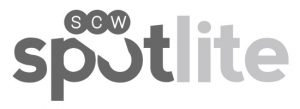 We’re always looking for great content highlighting the newest things in the world of fitness. Please submit your article directly to editor@scwfit.com for immediate consideration!
We’re always looking for great content highlighting the newest things in the world of fitness. Please submit your article directly to editor@scwfit.com for immediate consideration! Spotlite, April 9, 2025
Spotlite, January 5, 2025
Spotlite, November 11, 2024
Spotlite, September 27, 2024
Spotlite, August 31, 2024
Spotlite, July 26, 2024
Spotlite, June 22, 2024
Spotlite, May 23, 2024
Spotlite, April 26, 2024
Spotlite, March 22, 2024
Spotlite, February 19, 2024
Spotlite, January 20, 2024
Spotlite, December 21, 2023
Spotlite, November 18, 2023
Spotlite, October 22, 2023
Spotlite, September 21, 2023
Spotlite, August 19, 2023
Spotlite, July 19, 2023
Spotlite, June 19, 2023
Spotlite, May 18, 2023
Spotlite, April 21, 2023
Spotlite, March 28, 2023
Spotlite, February 18, 2023
Spotlite, January 21, 2023
Spotlite, December 16, 2022
Spotlite, November 19, 2022
Spotlite, October 22, 2022
Spotlite, September 24, 2022
Spotlite, August 23, 2022
Spotlite, July 22, 2022
Spotlite, June 20, 2022
Spotlite, May 18, 2022
Spotlite, April 20, 2022
Spotlite, March 25, 2022
Spotlite, February 17, 2022
Spotlite, January 14, 2022
Spotlite, December 17, 2021
Spotlite, November 18, 2021
Spotlite, October 25, 2021
Spotlite, September 16, 2021
Spotlite, August 9, 2021
Spotlite, July 10, 2021
Spotlite, June 8, 2021
Spotlite, May 14, 2021
Spotlite, April 30, 2021
Spotlite, March 30, 2021
Spotlite, February 23, 2021
Spotlite, January 20, 2021

